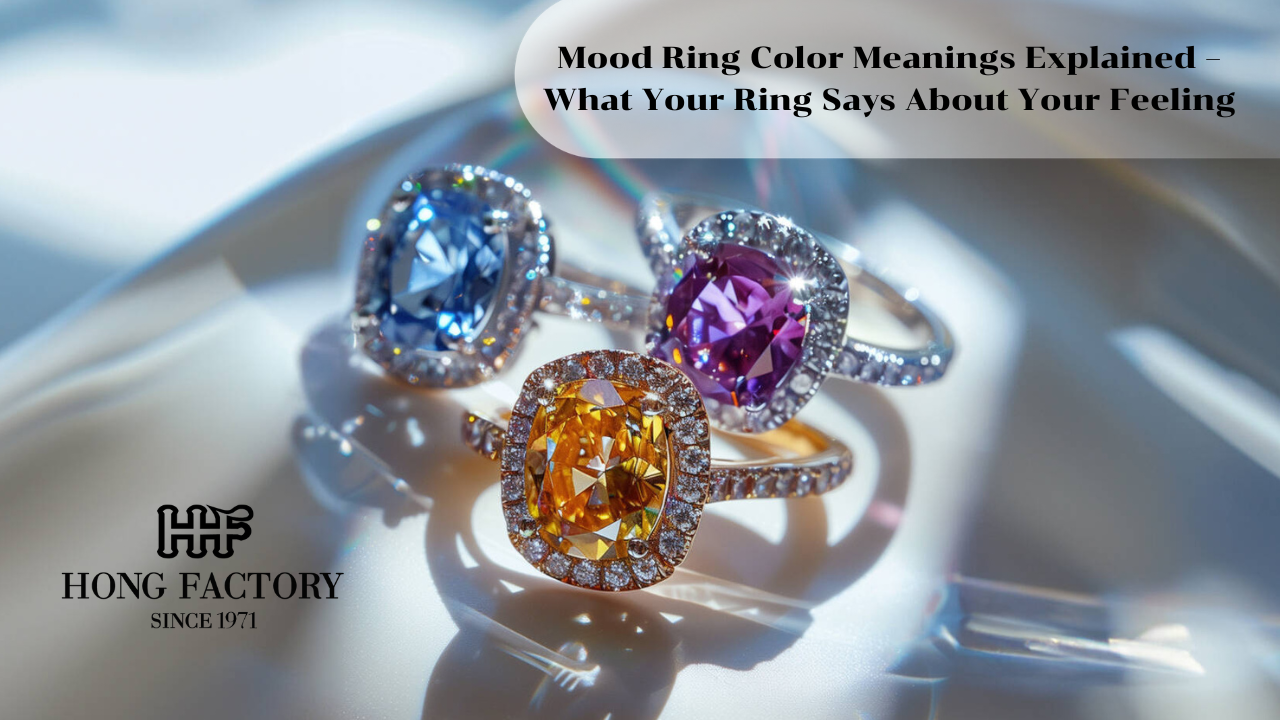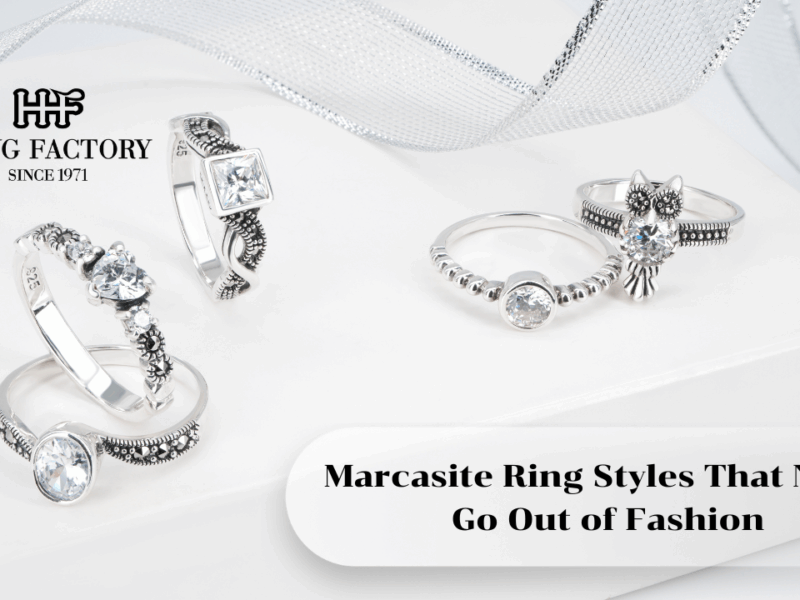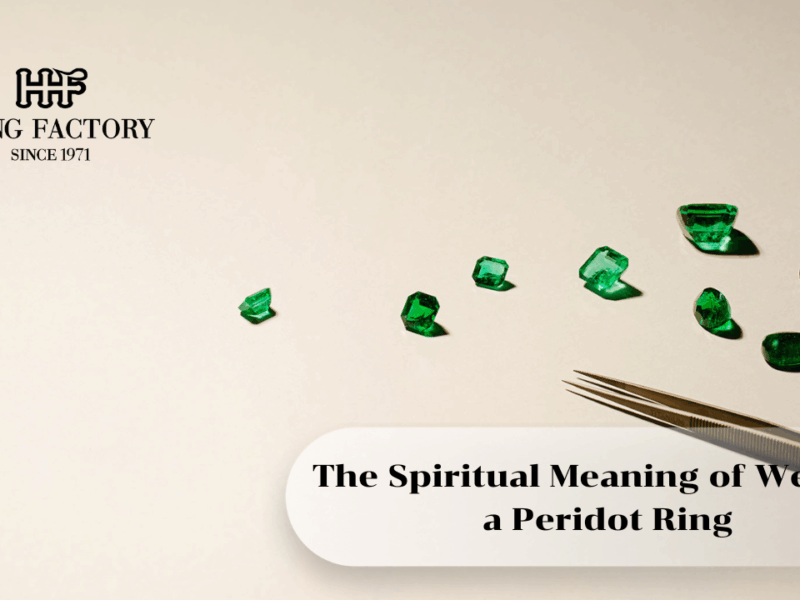Mood rings have fascinated people for decades with their ability to change colors and supposedly reveal emotions. What was once a fun 1970s trend has now become a timeless piece of fashion and curiosity. But beyond their colorful charm lies a clever bit of science and symbolism. If you’ve ever wondered what those shifting shades mean or what your ring might be saying about your emotions, this guide will help you understand it all. Marcasite stone
The Science Behind Mood Rings

Mood rings work using a thermochromics element—usually liquid crystals—that respond to changes in temperature. Since body temperature often fluctuates with emotions, the color of your ring changes too. For instance, when you’re calm or happy, your blood flows more evenly, raising the temperature and creating colors like blue or green. When you’re anxious or stressed, your blood flow decreases in extremities like fingers, making the ring turn dark or even black.
While mood rings don’t literally read your mind, they reflect physiological reactions that correspond with emotional states. This blend of science and symbolism is what makes them such a captivating accessory.
Mood Ring Color Meanings: Understanding the Shades of Emotion
The colors on a mood ring are more than aesthetic—they’re indicators of your body’s reaction to how you feel. Here’s a detailed guide to the most common shades and what they represent:
- Blue – Calm, Peaceful, Relaxed
Blue is one of the most common colors you’ll see on a mood ring, symbolizing balance and tranquility. It reflects a relaxed body and mind—perfect when you’re at ease or feeling content.
- Green – Normal, Balanced, Neutral
Green means your body temperature is steady and you’re emotionally balanced. It’s the “neutral” tone of the mood ring, showing that everything is stable.
- Purple – Passionate, Excited, Inspired
Purple tones suggest creativity, excitement, or romantic energy. It’s often associated with inspiration or moments when you feel deeply connected to something or someone.
- Pink – Loving, Playful, Happy
Pink represents affection and joy. It’s a soft, gentle color that reflects warmth and happiness—often appearing when you’re in a cheerful or flirty mood.
- Amber/Yellow – Nervous, Curious, Mixed Emotions
Yellow or amber tones often signal restlessness or curiosity. It’s the transitional color that may appear when you’re deep in thought or slightly anxious.
- Gray – Tense, Stressed, Uncertain
Gray is a sign that your body is cooling down from stress or tension. It may indicate worry, fatigue, or indecision.
- Black – Cold, Anxious, or Overwhelmed
Black is the lowest temperature range and often appears when you’re very stressed, upset, or feeling disconnected. It can also happen when the ring is simply too cold.
- Brown – Nervous, Uneasy, or Confused
Brown shades reveal a mix of tension and uncertainty. It’s often seen when emotions are hard to define.
Mood rings can vary depending on the brand or materials used, but these color meanings are fairly universal and widely accepted.
How Accurate Are Mood Rings?
Despite their popularity, mood rings aren’t precise emotional detectors. They can’t measure complex feelings but instead react to changes in your skin temperature. Still, their symbolic interpretations can be surprisingly relatable. The way you respond to color can offer insight into your personality, mindset, and how your emotions influence your physical state.
In other words, mood rings work as a fun reflection of your current vibe, not a scientific assessment. They’re best enjoyed as a wearable reminder of how connected your body and emotions truly are.
The Emotional Connection Between Colors and Feelings

Colors have psychological power. Even outside mood rings, color theory plays a huge role in how we perceive emotions. Warm tones like red and orange energize us, while cool colors like blue and green relax us. When worn as jewelry, these colors can help express your mood outwardly and even influence how you feel throughout the day.
That’s part of why mood rings remain popular—they combine science, style, and emotion in a single piece of jewelry. Whether it’s a deep blue that keeps you calm or a spark of purple that energizes your spirit, your ring becomes an emotional mirror.
Tips for Wearing and Caring for Mood Rings
If you want to keep your mood ring vibrant and functional, proper care is essential:
- Avoid water: Moisture can damage the liquid crystals inside.
- Keep away from heat: High temperatures can permanently change the ring’s ability to shift colors.
- Clean gently: Use a soft cloth to remove dirt and oils that may affect temperature sensitivity.
- Store safely: Keep it in a cool, dry place when not wearing it.
By maintaining your ring, you preserve its beauty and ensure accurate color changes.
Using Mood Rings as a Form of Self-Awareness
Wearing a mood ring isn’t just about aesthetics—it can help you tune into your own emotions. Seeing your ring change colors might remind you to slow down, breathe, or reflect on how you’re feeling. It’s a small but meaningful tool for mindfulness.
Some people even use mood rings as a conversation starter or as part of their daily wellness routine. Over time, you might notice patterns—like your ring turning blue during peaceful mornings or yellow during stressful afternoons.
Modern Fashion and Mood Rings
Today’s mood rings come in many modern designs. Minimalist silver bands, gold-plated settings, and gemstone-inspired finishes make them versatile enough for anyone’s style. They’re also available in necklaces, bracelets, and earrings—making the idea of mood color tracking both fashionable and fun.
Modern artisans have brought back the mood ring trend with high-quality materials and elegant finishes. The combination of vintage nostalgia and modern design gives mood jewelry a timeless place in today’s accessory world.
Mood rings remain an enchanting mix of fashion and emotion. While they might not literally read your feelings, they beautifully capture the connection between mood, color, and self-expression. The next time your ring turns a mysterious shade of blue, green, or purple, take a moment to notice how you feel—it might just align perfectly.
Whether worn for fun, mindfulness, or as a conversation piece, understanding Mood Ring Color Meanings transforms your jewelry from a simple accessory into a personal story of emotion and energy. Let your ring speak for you—sometimes, colors say what words cannot.


